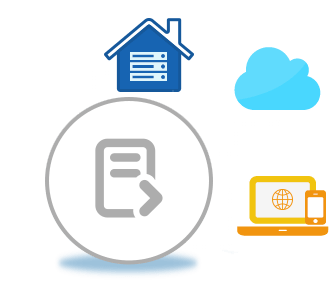Convert PPT to DOC via Java or Online App
On Premise Java API for PowerPoint PPT to DOC conversion within any Java J2SE, J2EE, J2ME applications
Aspose.Total for Java is a comprehensive suite of file format automation libraries that enable Java developers to automate the batch conversion process of PowerPoint PPT to Word DOC. This two-step process involves using two APIs, Aspose.Slides for Java and Aspose.Words for Java.
Aspose.Slides for Java is a PowerPoint API that provides powerful features for presentations manipulation and management. It can be used to convert PPT to HTML, which is the first step in the conversion process. Aspose.Slides for Java is a feature-rich API that allows developers to create, edit, render, and convert presentations in various formats.
The second step in the conversion process is to use Aspose.Words for Java, a feature-rich Word Processing API, to convert the HTML to DOC. Aspose.Words for Java provides a wide range of features for document manipulation and management. It can be used to create, edit, render, and convert documents in various formats.
By using Aspose.Total for Java, developers can easily automate the batch conversion process of PowerPoint PPT to Word DOC. Aspose.Slides for Java and Aspose.Words for Java provide powerful features for presentations and document manipulation and management, making it easy to convert PPT to HTML and HTML to DOC.
How to Convert PPT to DOC via Java
- Open PPT file using Presentation class
- Convert PPT to HTML by using save method and set Html as SaveFormat
- Load the converted HTML file using Document class
- Save the document to DOC format using save method
PPT File Conversion in Java
For PPT to DOC file conversion, you can easily use Aspose.Total for Java directly from a Maven based project and include libraries in your pom.xml.
Alternatively, you can get a ZIP file from downloads .
Free Online Converter for PPT to DOC
Convert Protected PPT to DOC via Java
The API also allows you to perform PPT to DOC conversion of password protected documents. If your input PPT document is password protected, you cannot convert it to DOC format without using the password. The API allows you to open the encrypted document by passing the correct password in a LoadOptions object.
Convert PPT to DOC with Watermark via Java
Using the API, you can also perform PPT file to DOC conversion with watermark. In order to add a watermark to your DOC document, you can first convert the PPT file to HTML and add a watermark to it. In order to add a watermark, load the newly created HTML file using the Document class, create an instance of TextWatermarkOptions and set its properties, Call Watermark.setText method and pass watermark text & object of TextWatermarkOptions.
Key Use Cases
- Converting meeting presentations into report-ready Word documents.
- Extracting textual content from slides for detailed documentation.
- Turning PowerPoint proposals into editable project briefs.
- Generating printable handouts from marketing or training decks.
Automation Scenarios
- Automated PPT-to-DOC conversion for report generation workflows.
- Integration into enterprise document management systems.
- Scheduled creation of Word summaries from weekly PowerPoint updates.
- Batch conversion for educational or corporate archives.
FAQ
- How can I convert PPT to DOC Online?Online App for PPT conversion is integrated above. To convert your PPT files to DOC format online, follow these simple steps. First, add your PPT file by either dragging and dropping it onto the designated area or clicking inside the white area to import the document. Then click the "Convert" button to start the conversion process. Once the PPT to DOC conversion is completed, you can download your converted file with just one click. It's a quick and easy way to get the file format you need.
- How long does it take to convert PPT?This online converter is designed to provide fast and efficient PPT to DOC conversion. The speed of the conversion process may vary depending on the size of the PPT file. Small size PPT files can be converted to DOC in just a few seconds. However, if you are integrating the conversion code within a Java application, the conversion speed may depend on how well you have optimized your application. In any case, our PPT to DOC conversion tool is equipped with state-of-the-art technology that ensures the best possible performance and output quality.
- Is it safe to convert PPT to DOC using free Aspose.Total converter?Of course! After the PPT to DOC conversion process is complete, you can quickly and easily download your converted file through the provided download link. Our system takes data privacy and security very seriously, so all uploaded files are deleted after 24 hours and the download links become inactive. We use a free app to provide a testing environment for users to check the results before integrating the code. Rest assured that your file conversion, including PPT, is completely safe and secure, and no one will have access to your files.
- What browser should I use to convert PPT?This online PPT to DOC converter is compatible with most modern browsers such as Google Chrome, Firefox, Opera, and Safari. However, if you're developing a desktop application, the Aspose.Total PPT Conversion API offers a smooth and reliable solution for converting PPT files to DOC format. This API offers a range of features and customization options to make the conversion process as efficient and effective as possible. Whether you're a developer or a casual user, you can easily integrate the PPT to DOC conversion code into your application and enjoy seamless and hassle-free conversions.




